Noise Colors are an integral part of the sonic landscape in music production.
They can significantly enhance a track’s texture, provide balance to its overall sound, and even be used creatively for unique effects.
As a music producer, it’s essential to understand the entire spectrum of noise colors and their applications.
This knowledge allows you to craft richer, more dynamic compositions and effectively use these sounds to elevate your tracks.
In today’s article, we’ll break down:
- Different noise colors and their characteristics √
- Technical and creative uses of white noise √
- The unique attributes and applications of pink noise √
- Deepening your tracks with brown noise √
- Higher frequencies in blue and violet noise √
- Specialized applications of green and grey noise √
- Lesser-known noises like red, purple, and black √
- The frequency spectrum (high frequencies/low frequencies) √
- The role of power density across different noises √
- Practical approaches to using sound machines & background noises √
- Creative techniques with diverse noise types √
- Much more about color noises √
By the end of this article, you’ll have a comprehensive understanding of noise colors and their place in digital music production.
Plus, you’ll be equipped with the knowledge to use these colors effectively.
Therefore, enhancing your tracks and music production workflow with the skill and finesse of a seasoned professional.
So, let’s dive in…
Table of Contents
- What Are Noise Colors?
- The Role of Noise Colors in Digital Music Production
- White Noise: An Essential Tool
- Pink Noise: More Than Just a Color
- Brown Noise: The Deeper Sound
- Blue and Violet Noise: The Higher Frequencies
- Green and Grey Noise: Unique Applications
- Exploring Lesser-Known Noises: Purple and Black
- Frequency Spectrum and Noise Power
- Colors of Noise: For Music Producers
- Noise Colors: Final Thoughts
What Are Noise Colors?

Noise, a fundamental element in music production, isn’t just about random sounds; it’s a spectrum of audio frequencies each with unique characteristics.
These are known as noise colors, a term that’s not just metaphorical but deeply rooted in the way these sounds interact with our auditory perception.
Noise colors (encompassing a range from white noise and pink noise to brown noise and beyond) play a pivotal role in the realm of digital music production.
Each noise color possesses distinct properties.
White noise, for instance, contains all frequencies at equal intensity, much like white light contains all colors of the spectrum.
On the other hand, pink noise, often heard in natural sounds like waterfalls, ocean waves, or steady rain, offers a balance that’s more pleasing to the human ear.
Understanding these differences is key to utilizing them effectively in music production.
The concept of these types of noise is grounded within the frequency spectrum, as each color of noise has specific characteristics.
For example, the power density of pink noise decreases with frequency, making it less harsh than white noise, blue noise, or green noise.
This scientific understanding is crucial for manipulating and employing these sounds in your work.
The Role of Noise Colors in Digital Music Production
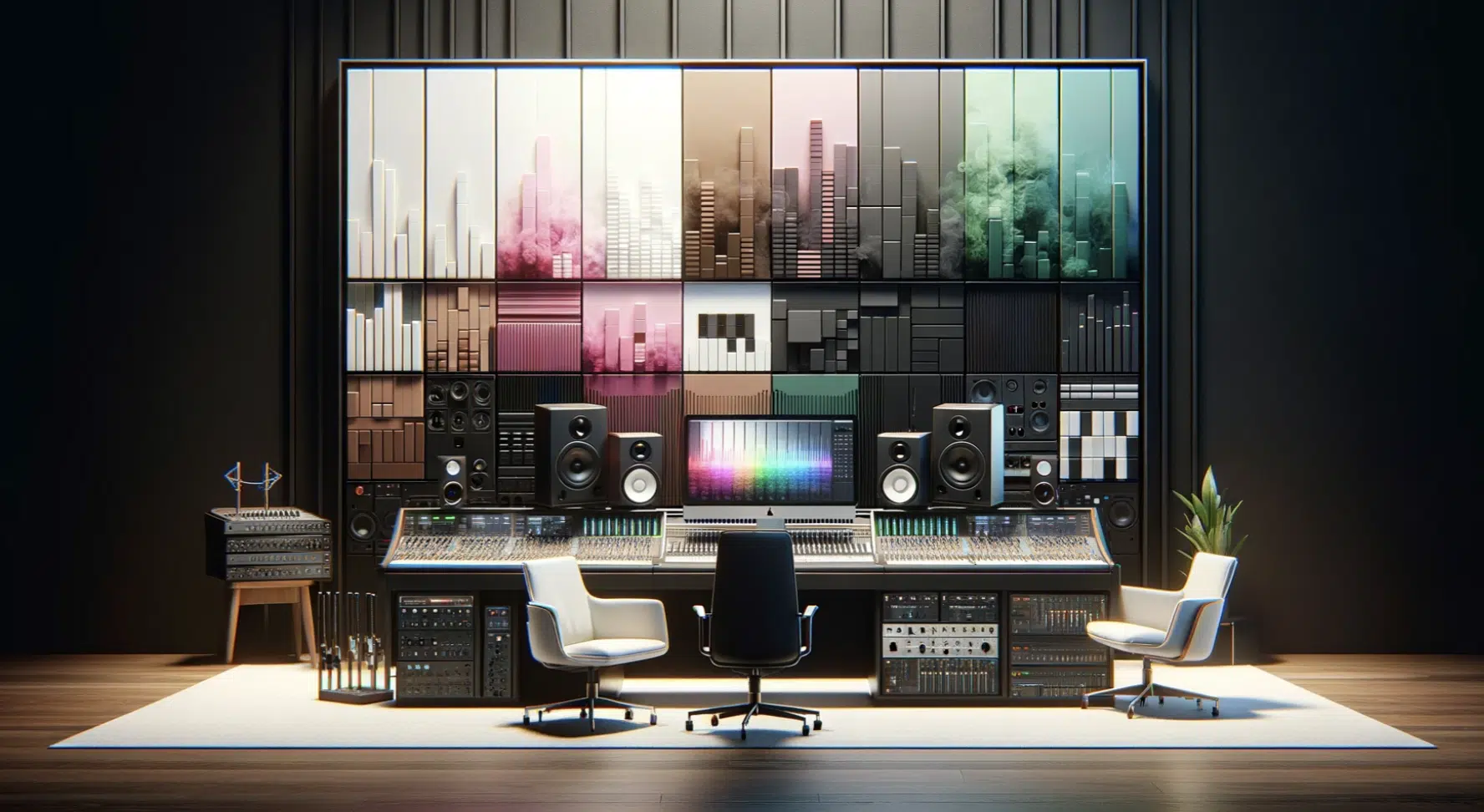
In digital music production, the types of noise colors (like white noise or gray noise) are not just background elements.
They are crucial for enhancing certain musical aspects.
White noise can add a sense of ‘fullness’ to a track, while pink noise is often used for balancing sound levels across the frequency spectrum.
Beyond technical enhancements, noise colors offer vast creative possibilities, like creating:
Understanding how to use these colors can elevate the quality of music production and sound design significantly.
The versatility of these sounds opens up new avenues for creativity and innovation.
White Noise: An Essential Tool

White noise, a pivotal element in music production, comprises all sound frequencies humans can hear, each presented at an equal power level.
This results in a constant, static-like sound, similar to the flicker noise of a detuned radio, broadband noise, or the buzz of an air conditioner.
In music production and audio engineering, the white noise spectrum serves multiple purposes.
White noise is a go-to for:
- Synthesizing hi-hats
- Building risers for transitions
- Filling empty spaces in a mix
The ability of random white noise to mask other sounds also makes it a valuable tool for creating a balanced audio environment.
When working with white noise, you must consider factors like volume, filtering, and modulation, ensuring the white noise complements other elements in your track.
As opposed to overwhelming them or drowning them out completely.
Properly managed, white noise can add depth and texture to a piece 一 enhancing the overall listening experience.
White noise, with its comprehensive spectrum covering all audible frequencies, serves as a versatile tool.
NOTE: From creating lush soundscapes to enhancing transitions, white noise provides a backdrop that can be shaped and molded, while the subtlety of color noise adds another layer of complexity.
Pink Noise: More Than Just a Color
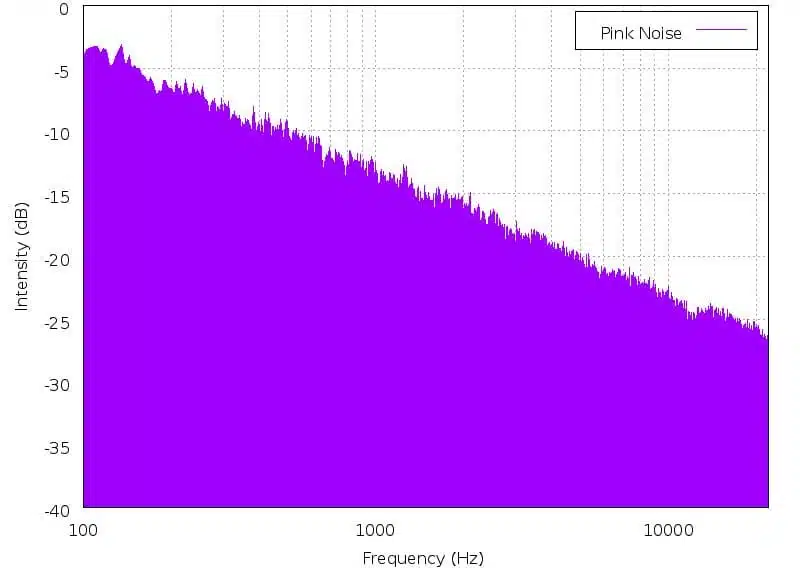
Pink noise, distinguished from its white noise counterpart, follows a power density that decreases with frequency.
This results in a sound that is more balanced and less harsh, often described as smoother and more natural.
One of the most significant applications of pink noise in music production and audio engineering is in:
Its frequency distribution aligns closely with the human ear’s response, making it an excellent reference for balancing a mix.
By comparing their tracks to a pink noise profile, you can achieve a more harmonically balanced and pleasing sound.
Pink noise isn’t confined to studio use…
It finds applications in live sound settings to calibrate audio systems and even in non-musical contexts.
NOTE: This includes sleep quality aids (like sleep slow oscillations), ambient noise, and auditory therapy, showcasing the versatility of pink noise.
The pink noise spectrum, with its unique pink noise pattern, is essential for mastering the art of mixing.
This is because this pink noise spectrum accurately aligns with the human ear’s frequency response 一 making it a fundamental tool in music production.
Brown Noise: The Deeper Sound

Brown noise (Brownian noise), also called red noise is deeper and richer compared to white noise or pink noise.
Brown noise emphasizes lower frequencies 一 resulting in a powerful, rumbling sound.
This is because the power density decreases in brown noise more rapidly than in pink noise as the frequency increases.
In music production, you find brown noise is often employed for its depth and warmth.
It can add a natural, organic feel to a track, particularly in:
- Ambient music
- Cinematic music
- Commercial music
Its low-frequency emphasis can also be useful in sound design, especially for creating resonant effects with Brownian noise.
Working with brown noise requires an understanding of its impact on the low-frequency spectrum.
You must balance the use of brown noise to avoid overwhelming a mix with too much low-end energy, which can result in muddiness.
Blue and Violet Noise: The Higher Frequencies
Shifting focus from the lower to the higher end of the spectrum, blue noise and violet noise offer contrasting characteristics to their lower-frequency counterparts. These color noises emphasize the higher frequencies, providing a unique palette to explore.
-
Blue Noise

Blue noise, also called azure noise, characterized by its concentration on higher frequencies, presents a brighter and more dynamic sound profile.
It’s often likened to the hiss of a spray can, with a power density that increases with frequency.
This attribute makes blue noise ideal for adding crispness and clarity to a track.
In the digital music production world, blue noise finds its place in:
- Sharpening percussive elements
- Enhancing the overall brightness of a mix
Its ability to counteract muddiness in lower frequencies is invaluable.
This is because it offers a counterbalance that can bring out the details in complex compositions.
-
Violet Noise
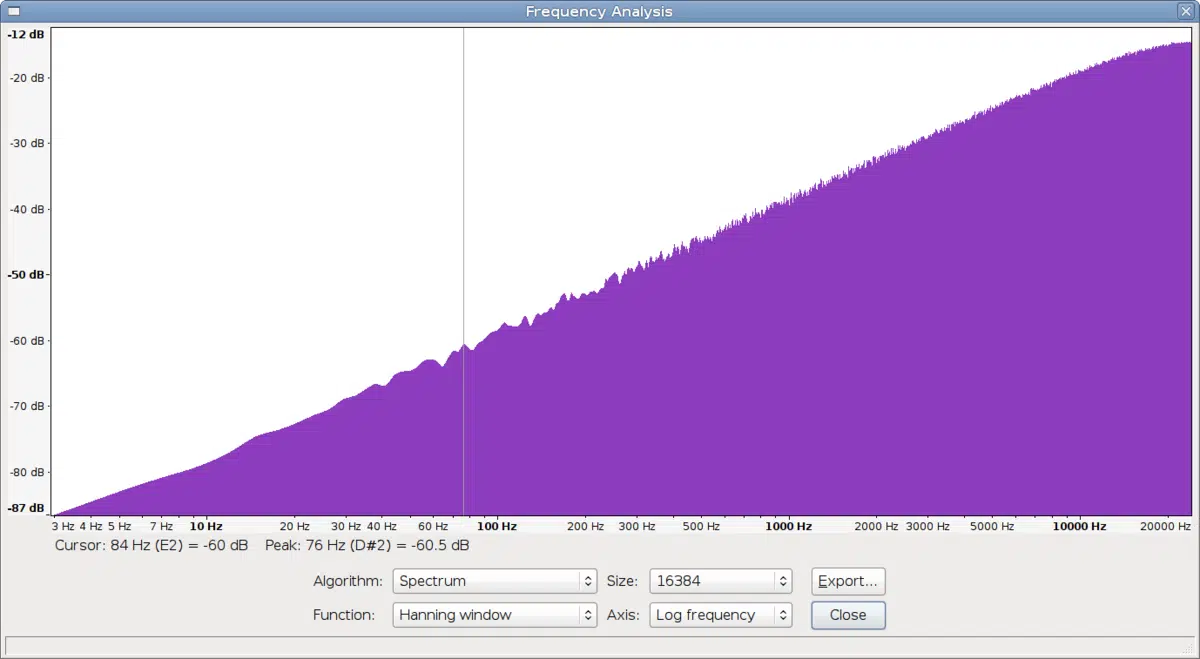
Violet noise, a variant of blue noise, takes the emphasis on higher frequencies a step further.
It has a more aggressive increase in power density at these higher frequencies 一 leading to an even sharper sound profile.
This makes violet noise a less common but intriguing tool for music producers.
Violet noise’s unique sonic characteristics make it a potent tool for specific sound design applications.
Its use can range from creating artificial wind sounds to providing a cutting edge in electronic music tracks.
NOTE: You must handle violet noise with care to avoid overwhelming the higher end of the sound spectrum.
Green and Grey Noise: Unique Applications
Moving towards more specialized noise colors, green and grey noise offer unique applications that cater to specific needs in digital music production.
-
Green Noise in Ambient Settings
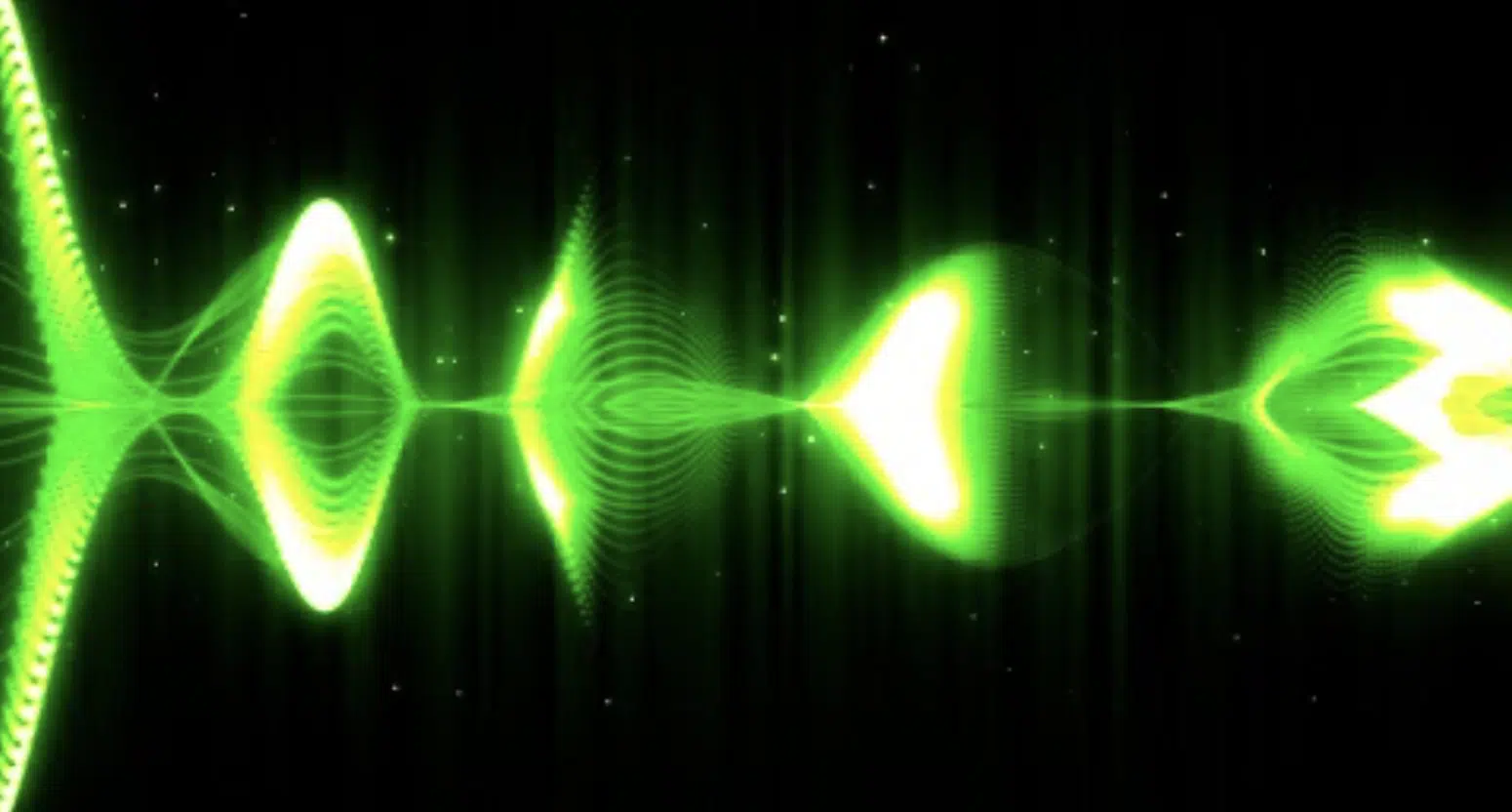
Green noise, often associated with the mid-frequency range, resembles the sound of rustling leaves or a gentle breeze.
Its balanced spectral density across the human hearing range makes it a natural choice for creating calming and ambient soundscapes.
In the music studio, green noise is employed for its soothing qualities, often in ambient music or as a subtle background layer to add depth and realism.
Its natural, soothing tone can also be used in sound therapy and relaxation tracks.
-
Grey Noise for Balance

Grey noise, with its equal loudness characteristic across all the frequencies, provides a unique sonic texture.
It’s perceived as a flat noise, making it an excellent tool for audio calibration and testing in music production settings.
In practical applications, grey noise is used for its balancing properties.
It can help you assess and adjust the overall balance of a mix 一 ensuring that no frequency range dominates the others.
This makes it a vital tool for achieving a harmonious and well-rounded sound.
NOTE: When compared to the white noise spectrum, grey noise has equal strength over the linear frequency scale.
Exploring Lesser-Known Noises: Purple and Black
Beyond the commonly known noise colors, the spectrum extends to include purple and black noises.
Each offers unique properties and applications, further broadening the scope for music producers.
-
Purple Noise

Purple noise, a less common color, has an increasing spectral density at higher frequencies, much like violet noise.
Its application in music production is niche, often used for specific sound design purposes or to add an unconventional edge to a track.
-
Black Noise
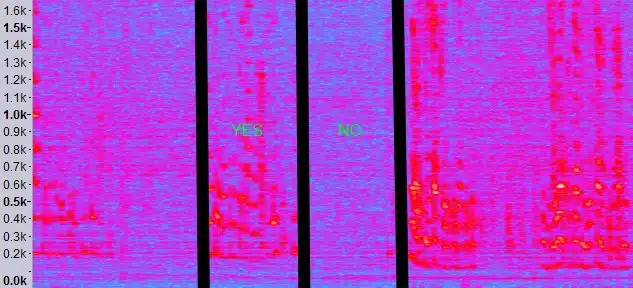
Black noise, often associated with silence, actually refers to an ultrasonic frequency range that is generally inaudible to the human ear.
In music production, it’s used more conceptually, to represent a pause or absence of sound 一 which can be a powerful tool in creating auditory stimulation.
The use of whats called purple noise and black noise, while not as widespread as other noise colors, offers producers a chance to experiment with unusual sonic textures.
Whether for creating atmospheric effects or for conceptual purposes, these lesser-known noises can add a distinctive layer to a track.
Frequency Spectrum and Noise Power
Understanding the frequency spectrum (from low frequencies to higher frequencies) and noise power is crucial in mastering the use of color noise in music production. So, let’s break it down.
-
Understanding Frequency in Noise Colors (Lower Frequencies, Higher Frequencies)
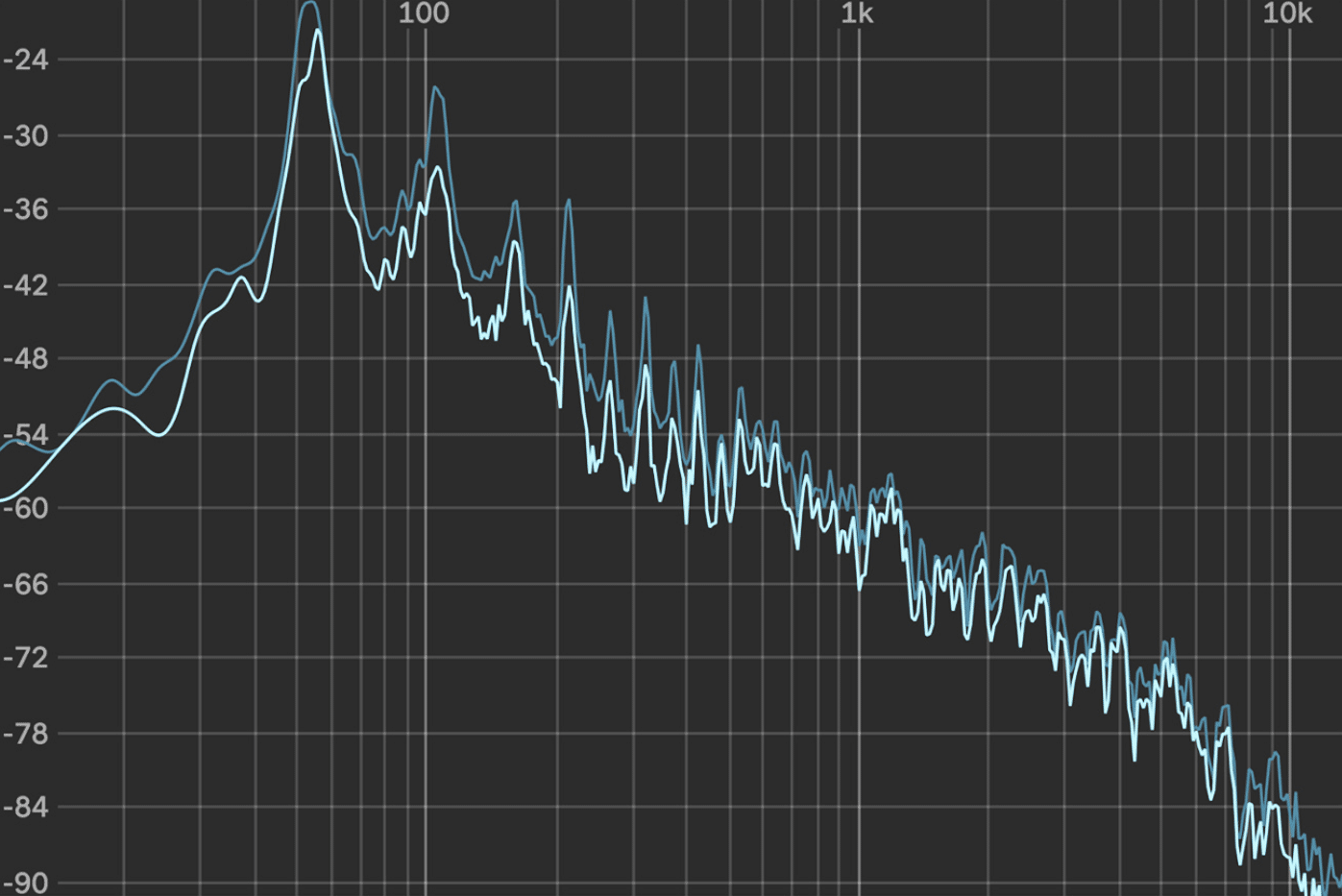
The frequency spectrum is fundamental to distinguishing between all the different noise colors, which is very important.
By doing so, you can incorporate them more efficiently in your tracks, capturing the ears of your listeners in creative ways.
- Lower frequencies 一 Provide depth and warmth (brown or red noise).
- Higher frequencies 一 Add brightness and clarity (blue and violet noise).
This understanding is essential for you to effectively utilize noise colors in your unique beats.
A key challenge in music production is achieving a balance between lower and higher frequencies.
Utilizing colors of noise strategically can help in this regard, allowing you to fill in frequency gaps or reduce overpowering elements in a mix.
Technical proficiency in managing the frequency spectrum is vital.
You must understand how different noises interact within a track, ensuring that each color noise complements rather than clashes with others.
This requires a keen ear and a thorough understanding of sound wave behavior.
-
Power Density in Different Noises
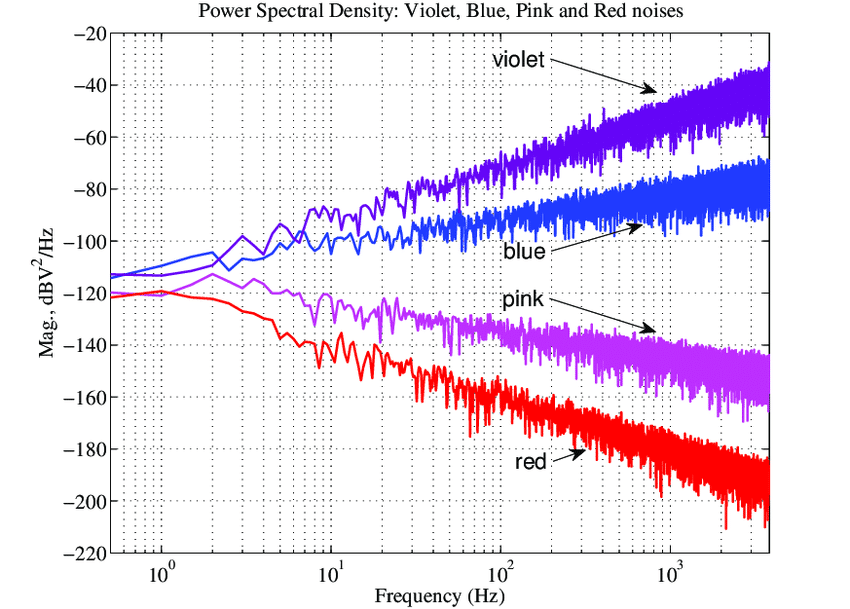
Power density, a measure of more energy distribution across certain frequencies, varies significantly among different noise colors.
Understanding this concept is key for you to manipulate noise colors effectively in your work; tweaking them to suit the needs of each track.
In music production and audio engineering, paying attention to the power density of color noises can aid in achieving the desired sonic texture.
For instance, the decreasing power density of pink noise makes it ideal for creating a balanced and natural-sounding mix.
To leverage this, you can layer pink noise beneath your tracks, subtly adjusting its volume to ensure that no single frequency dominates the mix.
This technique helps in achieving an even sound across all frequencies, making the overall mix sound more cohesive.
By using pink noise as a reference, you can fine-tune the levels of individual tracks 一 ensuring each element of your track is heard clearly without overwhelming the others.
Colors of Noise: For Music Producers
The array of noise colors offers a rich palette for music producers, each color bringing its unique qualities to the audio canvas. Understanding how to use these colors effectively is a skill that sets apart seasoned producers from novices.
-
Use of Sound Machines in Music (For a Deeper Understanding)

Sound machines, often used for relaxation or deep sleep therapy, typically utilize various noise colors like white noise, pink noise, and brown noise.
The principles used in sound machines can be adapted for music production and audio engineering.
You can harness these noise colors to:
- Create textured backgrounds
- Fill out a mix
- Create rhythmic patterns
These factors demonstrate the versatility of these intriguing sounds.
A sound machine offers a practical example of how different colors of noise can be used to create specific auditory environments.
-
Creative Uses of Background Noises
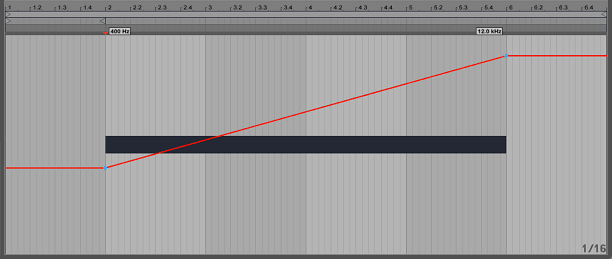
The use of background noise allows producers to set a mood or evoke specific environments within their tracks.
By carefully selecting noise signals from the noise spectrum, you can create an ambiance that resonates with the listener.
For instance, a soft hiss or ambient city sounds can transport the audience to a specific place or moment, which makes the music more immersive and relatable.
Background noise, when skillfully blended into a song, can add a sense of realism and depth that pure musical tones often lack.
The noise spectrum offers a variety of textures 一 from the soothing rustle of leaves to the distant buzz of urban life.
Incorporating these elements can make a track feel more alive and dynamic, providing a richer listening experience.
The noise spectrum is a treasure trove for producers to layer their tracks with intricate soundscapes.
By weaving together different strands of noise signals, you can create a complex, multi-dimensional auditory detail that is very captivating.
-
Noise Types for Specific Effects: Acoustic Enhancement
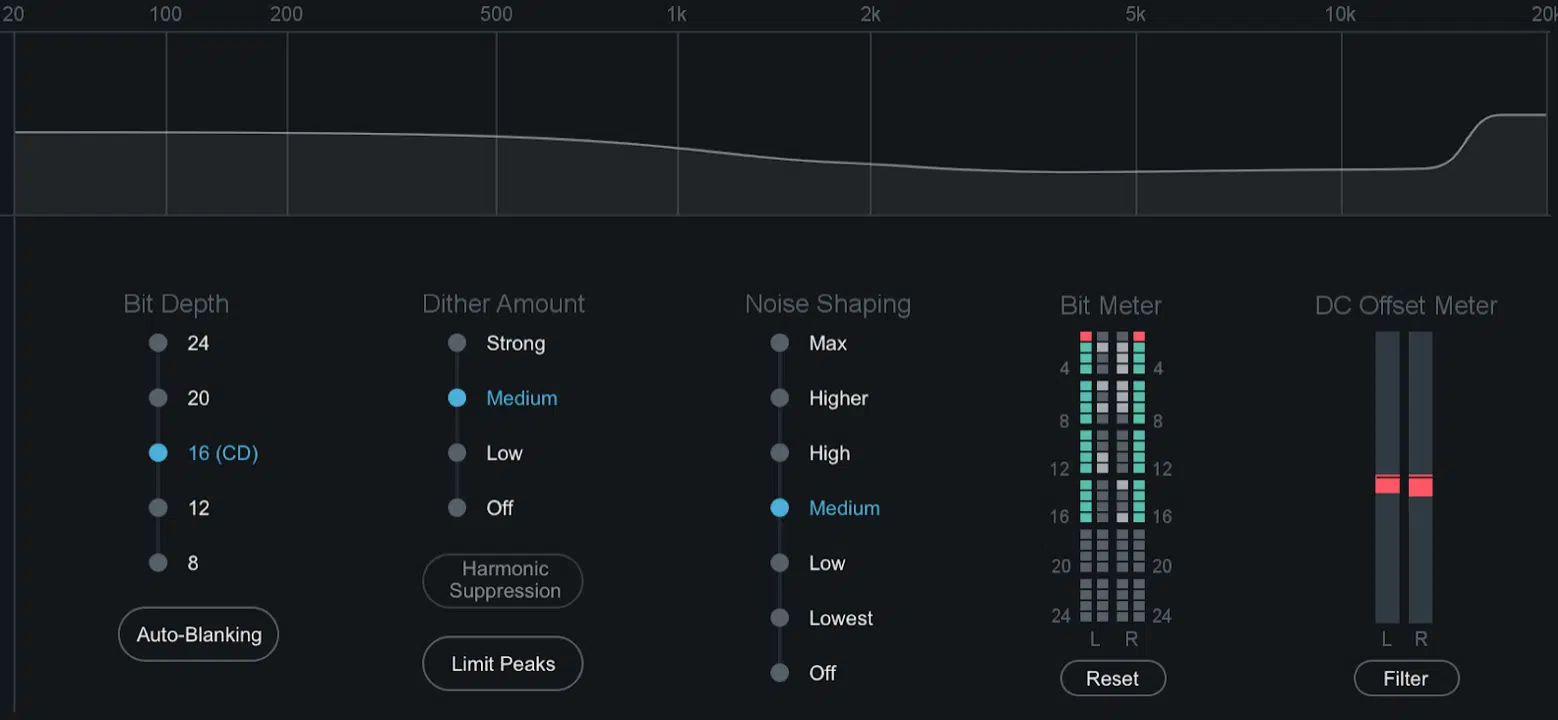
Noise colors can be strategically used for acoustic enhancement, improving the overall constant sound quality of a track.
This involves understanding the acoustic properties of different noises and how they interact with other elements in a mix.
Techniques such as using white noise for filling spectral gaps and/or dithering or employing pink noise for a balanced mix demonstrate the practical applications of noise colors in acoustic enhancement.
The key is to integrate these colors of noise in a way that complements the musical elements, enhancing rather than overpowering them.
Noise Colors: Final Thoughts
Throughout this article, we’ve explored the intricate world of noise colors and their profound impact on music production.
The knowledge you’ve gained about the different noise colors (from white to pink, brown to blue, and beyond) is more than just technical understanding.
It’s a way to elevate the quality and appeal of your music.
By mastering the use of these noise colors, you’re equipped to create more textured, dynamic, and professional-sounding tracks.
This way, you can successfully harnessing a powerful tool that will help transform your musical creations.
Speaking of transformation, you’ve got to check out this show-stopping free Serum Essentials pack.
This pack is not just a collection of 16 serum presets 一 it’s a key to unlocking professional sound quality in your music, leading to more plays and recognition.
Each preset in this pack is loaded with macros and flexible parameters, offering you the freedom to tweak and customize.
What makes it particularly relevant to our topic is that Serum offers a range of noise color variants in its noise oscillator.
This means you can directly apply your newfound knowledge of noise colors, using these presets to add depth, texture, and complexity to your tracks.
So, embrace the lessons learned today and this bonus free pack, and watch as your music reaches new heights of professionalism and appeal.
Until next time…







Leave a Reply
You must belogged in to post a comment.